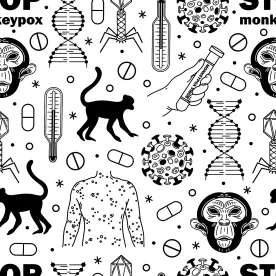As of July 26, 2022, there are 3,591 confirmed cases of monkeypox in the United States, according to US Centers for Disease Control and Prevention (CDC) data, and the World Health Organization (WHO) Director-General has declared the multi-country monkeypox outbreak a Public Health Emergency of International Concern (PHEIC). With much about the potential impact and scope of monkeypox still unknown, employers should consider taking proactive steps now, as may be appropriate for their workforce, to enhance and reinforce the safety protocols already in place from the COVID-19 pandemic. This On the Subject covers three key considerations for employers with respect to monkeypox.
IN DEPTH
1. EDUCATE THE WORKFORCE REGARDING MONKEYPOX.
Employers should consider updating their current pandemic safety policies to include information about monkeypox, including how the virus is spread and its symptoms.
How monkeypox spreads. According to the WHO, the monkeypox virus is transmitted through close contact with another infected person, contaminated materials or an infected animal. With respect to person-to-person spread, the virus can spread face-to-face, skin-to-skin, mouth-to-mouth or mouth-to-skin, though possible transmission through the air is not yet well understood. As for animals, monkeypox can spread to people when they come into physical contact with an infected animal, especially those that are sick or dead.
Monkeypox symptoms. Symptoms of monkeypox infection include some or all of the following:
-
A rash that can look like pimples or blisters
-
Fever
-
Headache
-
Muscle aches
-
Backache
-
Swollen lymph nodes
-
Chills
-
Exhaustion
The incubation period (which is the interval from infection to onset of symptoms) for monkeypox can last up to 21 days. In contrast to COVID-19, it is not yet clear whether people with monkeypox who are asymptomatic can spread the disease. If an employee tests positive for monkeypox, the illness can generally last between two to four weeks.
2. IMPLEMENT A POLICY REGARDING EMPLOYEE MONKEYPOX EXPOSURE AND DIAGNOSIS.
Just as with COVID-19, if an employee has monkeypox, they should not come to the worksite. Moreover, if an employee has had close contact with someone who has been diagnosed with monkeypox or exposed to an environment contaminated with the virus, they should monitor themselves closely for monkeypox symptoms for the 21-day incubation period.
Many employers have already implemented COVID-19 self-monitoring requirements for employees. These measures require employees to assess whether they exhibit any symptoms of the virus and, if so, not to report to work. Employers may consider updating their self-monitoring policies to expand symptoms to include all monkeypox symptoms, too. Any employee who exhibits monkeypox symptoms should contact their healthcare provider for medical advice, testing and care.
While there are no laws that currently require employers to provide paid leave for monkeypox specifically, there are several states and local jurisdictions with paid sick leave requirements; these laws may cover certain absences related to monkeypox. Employers should consult with employment counsel to determine the applicability of such laws to monkeypox infection and exposure.
3. EXPAND EXISTING COVID-19 PROTOCOLS TO ADDRESS THE PREVENTION OF MONKEYPOX IN THE WORKPLACE.
Employers will find that, in many ways, monkeypox spread and symptom information overlaps with COVID-19 information. Likewise, the recommended preventative measures from the CDC and WHO mirror COVID-19 prevention in many ways. Therefore, employers may find it most efficient to review and update their existing COVID-19 safety protocols to reflect a more expansive safety protocol applicable to monkeypox.
Employers can share the following information about ways to prevent monkeypox spread, per the WHO and CDC:
-
People who live with or have close contact with someone who has monkeypox, or with animals that could be infected, are the most at risk for catching monkeypox. Healthcare workers who work with monkeypox patients should follow infection prevention and control protocols to protect themselves, including avoiding directly touching the bedding, towels and clothing of a person with monkeypox.
-
Avoid close, skin-to-skin contact with people who have a rash that looks like monkeypox, and do not share eating utensils or cups with someone with monkeypox symptoms.
-
Employees who are aware they have been in close contact with someone with monkeypox should monitor for symptoms up to 21 days after exposure. Any employee who has confirmed monkeypox should isolate at home until their symptoms have dissipated.
-
Employees should continue to follow hygiene protocols and frequently wash their hands with soap and water or use an alcohol-based hand sanitizer.
-
Monkeypox is genetically similar to smallpox; thus, it is currently believed that smallpox vaccines can be used to provide some protection against monkeypox. The CDC recommends vaccination for people exposed to monkeypox and those at higher risk of exposure, including some designated healthcare or public health workers and laboratory workers who work with orthopoxviruses.





 />i
/>i

